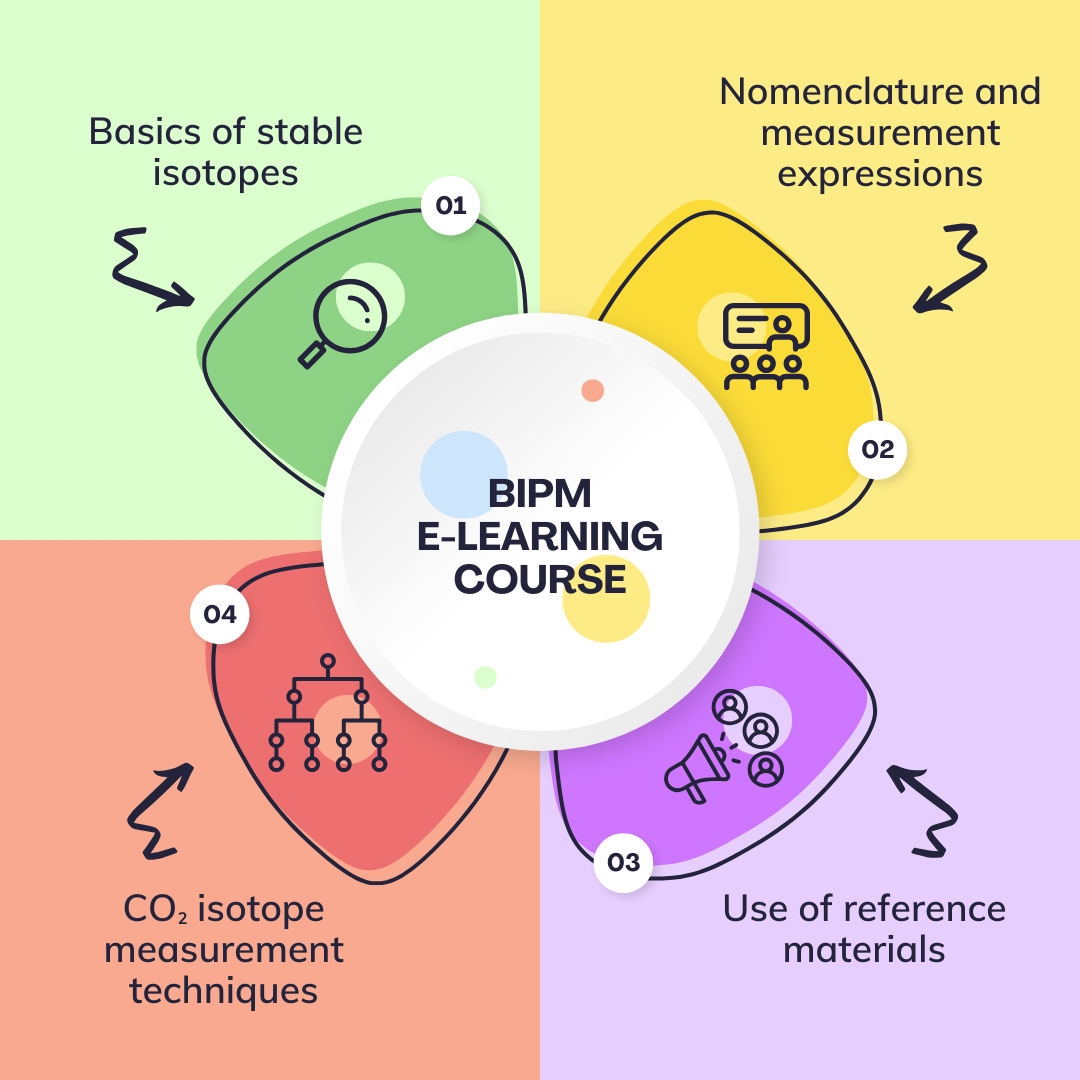
BIPM Launches e-Learning Course on Stable Isotope Ratio Standards for Environmental and Atmospheric Monitoring
The BIPM has launched a new e-learning course offering foundational knowledge for understanding and applying mass spectrometric and optical methods in the measurement of stable isotopes. It is designed for those who are new to the field of stable isotopes and particularly useful for those working in atmospheric monitoring and environmental research.
The course covers the measurement of stable isotopes of the light elements—hydrogen (H), carbon (C), nitrogen (N), and oxygen (O)— with a focus on atmospheric monitoring applications. Accurate measurements of these isotopes in CO2 are critical for atmospheric monitoring, helping to improve our understanding of environmental changes.
Key Course Features
- Basics of stable isotopes: The fundamentals of working with stable isotopes in light elements (H, C, N, O) and their importance in scientific research.
- Nomenclature and measurement expressions: How isotope measurement results are expressed, along with key terminology.
- Use of reference materials: The importance of reference materials to ensure precise and accurate results.
- CO2 isotope measurement techniques: Specialized knowledge on the measurement of CO2 isotopes, which are critical for atmospheric monitoring
Developed by Isotope Expert
The course was developed by
Why This Matters
Stable isotope ratio measurements are critical in various scientific fields, particularly in atmospheric monitoring, where accurate data is essential for climate-related records. By providing a comprehensive summary of standards and measurement methods in the field, this course provides metrology institutes with the foundational information required to initiate programmes - and contribute to global efforts to better understand and mitigate climate change.